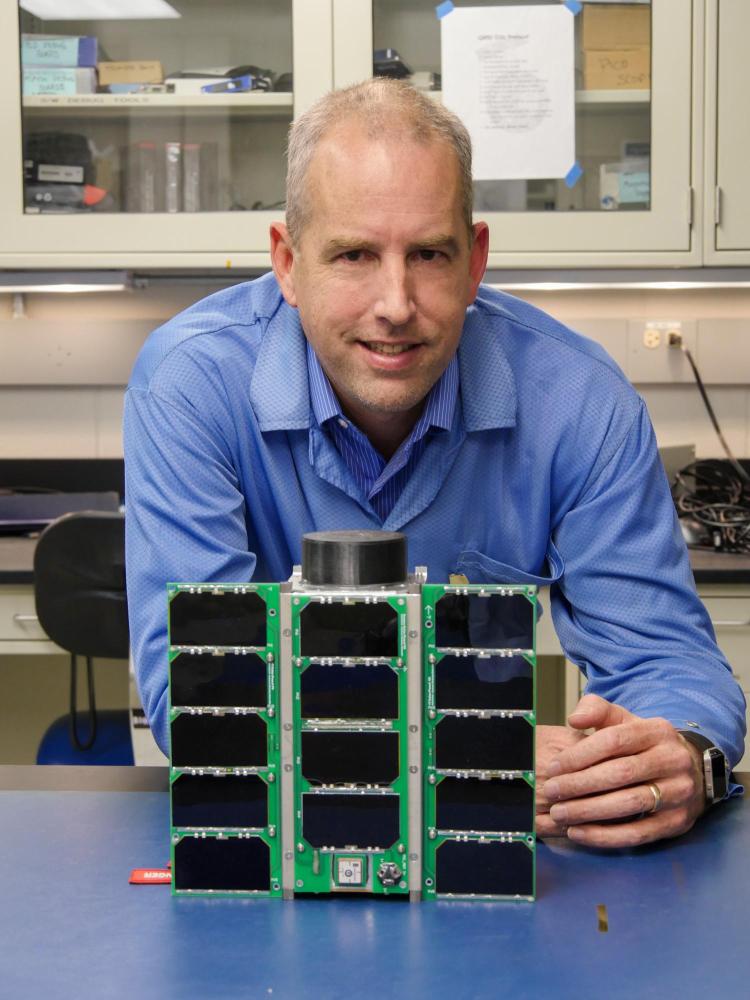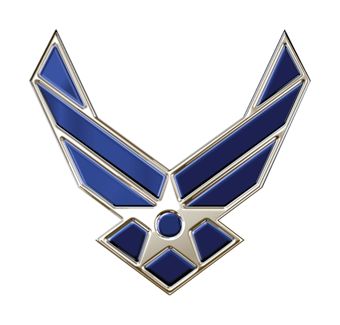Scott Palo wants to send RALPHIE to space.
RALPHIE the satellite, that is. The U.S. Air Force is providing support to help make it happen.
Palo, a professor of aerospace engineering sciences at the University of Colorado Boulder, and Associate Director of SpectrumX has earned an Air Force Research Laboratory University Nanosatellite Program (UNP) grant to design RALPHIE, named for CU Boulder’s buffalo mascot. The acronym stands for “Radio And Laser PatH agnostIc communications Experiment.”
Advancing Communication

RALPHIE will be a CubeSat, a “nano” satellite, approximately the size of a large shoebox. It is being designed to demonstrate path diagnostic communications technology in space, which would allow satellite communications to be automated. Currently most transmissions between satellites and the ground are scheduled manually, creating bottlenecks and hassles for operators.
“It gets kind of painful,” Palo said. “Imagine with your cell phone if you had to worry about which tower you were connected to. That’s how satellite communications are. We want to be able to manage those communications in an autonomous way.”
Technology Innovations
The two-year grant is for the initial design of the satellite. The team will then submit their work for additional funding to build the spacecraft as part of the UNP Flight Competition Review in 2024. Palo is hopeful the technology will prove successful and demonstrate new possibilities for full-size satellites.
“Large spacecraft cost hundreds of millions of dollars and tend to have a long life cycle and a risk adverse posture,” Palo said. “People don’t really want to innovate with them; they want to know something will work. CubeSats cost much less, they encourage innovation. You should be pushing the envelope on CubeSats so we can learn how to do new things in space.”
Nearly Two Dozen CubeSats
RALPHIE is just the latest in a line of nearly two dozen CubeSats designed and built on the CU Boulder campus. With a smaller size and much lower price tags, CubeSats offer students the ability to have a leading role in their design, construction and operation.
“I’m mentoring the CubeSat teams, but strong student leaders are the secret sauce,” Palo said.
In addition to RALPHIE, Palo is principal investigator on three other upcoming CubeSats: MAXWELL, CU-E3, and SWARM-EX, with students heavily involved in each project.
SWARM-EX will investigate the relationship between charged particles and neutral particles in the thermosphere. A major, six-university partnership, the project recently completed a critical design review with all of the academic partners, external reviewers and the National Science Foundation, which is providing funding.
“SWARM-EX is rocking and rolling,” Palo said. “The critical design review was an all-day event on November 19 and students led the presentation. It went exceptionally well. We got very positive feedback.”
The SWARM-EX project has completed the design phase and is moving into build and test, with launch not expected until late 2023.
CU-E3 will advance deep space communication techniques in heliocentric orbit. It had been aiming for a launch on Artemis 1, NASA’s February 2022 high profile orbital moon mission, but experienced a hardware failure over the summer that has delayed completion.
Although Palo is disappointed with the setback on CU-E3, problem solving is a critical part of an engineering education.
“There is nothing that trains an engineer like having to build and test hardware,” Palo said. “Where the rubber hits the road is when you have to take a design and solve all the problems. The students mature significantly from that.”
The MAXWELL CubeSat is closest to completion, with launch expected late next year. It aims to test high rate communications in deep space.
“We’re working to get the spacecraft integrated and tested,” Palo said. “We’re doing testing of subsystems right now. If anyone is interested, we’re always looking to meet new students to join our projects. Out graduates come out of CU Boulder with significantly more experience than their peers at other universities from working on these programs.”
Originally posted on Dec. 14, 2021 – https://www.colorado.edu/aerospace/2021/12/14/cu-boulder-lands-air-force-grant-design-new-cubesat-earth-orbit
Interested in getting involved with a CU Boulder CubeSat? There are openings for students on multiple project teams. Email Scott.Palo@colorado.edu for more information.
